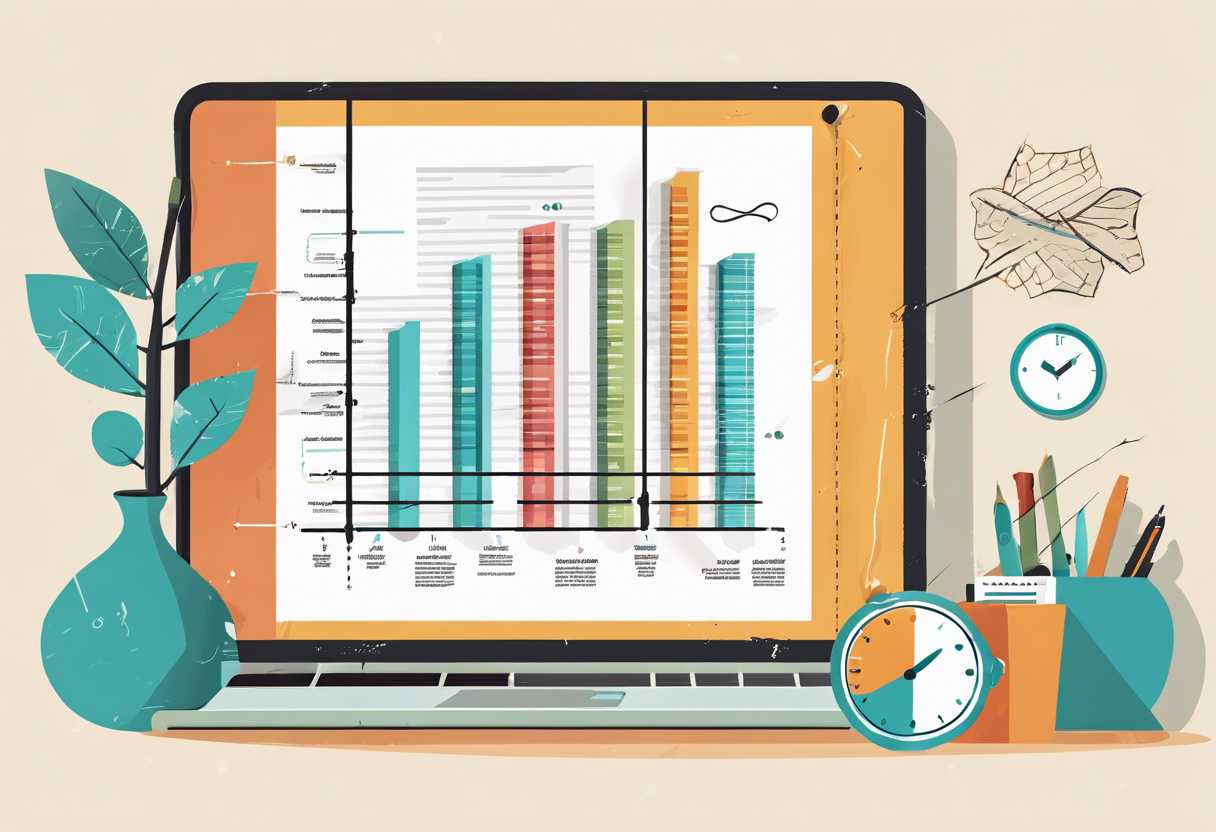Are you looking to gain a deeper understanding of Gantt charts and how they can benefit your project management efforts? In this blog post, we will explore the definition and examples of Gantt charts, as well as their importance in project management. We will also delve into how to create and use Gantt charts effectively, providing real-life examples of their application. Additionally, we will offer valuable tips for choosing the right Gantt chart software to suit your specific needs. Whether you are new to Gantt charts or looking to enhance your existing knowledge, this post will provide you with the essential information you need to make the most of this valuable project management tool. So, let’s dive into the basics of Gantt charts and discover how they can revolutionize your project planning and execution.
Understanding the Basics of Gantt Charts
What is a Gantt Chart?
A Gantt chart is a visual representation of a project schedule that shows the start and finish dates of the various elements of a project. It is a powerful tool for project management as it allows for easy visualization of the project timeline, dependencies, and progress.
Key Components of a Gantt Chart
One of the key components of a Gantt chart is the task list, which outlines all the activities that need to be completed for the project. Each task is represented by a bar on the chart, with the length of the bar indicating the duration of the task. Another important component is the timeline, which shows the start and end dates of the project and each task. Additionally, dependencies between tasks are often shown using arrows on the chart.
Benefits of Using Gantt Charts
Using Gantt charts can help project managers and teams to easily track the progress of a project, identify potential delays, and allocate resources effectively. They also provide a clear visual representation of the project timeline, making it easier to communicate the project plan to stakeholders. Furthermore, Gantt charts can help in identifying critical path activities and managing project dependencies.

The Importance of Gantt Charts in Project Management
Enhanced Project Planning
Gantt charts are an essential tool in project management as they provide a visual representation of the project timeline, tasks, and dependencies. This allows project managers to effectively plan and schedule tasks, allocate resources, and set realistic deadlines. By using Gantt charts, project teams can easily identify potential bottlenecks and allocate resources accordingly, leading to improved project planning and execution.
Improved Communication and Collaboration
One of the key benefits of Gantt charts is their ability to improve communication and collaboration among project team members. With a clear visual representation of the project timeline and tasks, team members can easily understand their roles and responsibilities, as well as the overall project progress. This leads to better coordination and collaboration, ultimately resulting in improved project outcomes.
Effective Resource Management
Gantt charts also play a crucial role in resource management within a project. By clearly outlining the tasks and their dependencies, project managers can effectively allocate resources based on the project timeline and requirements. This ensures that resources are utilized efficiently, leading to cost savings and improved project performance.

How to Create and Use Gantt Charts Effectively
The Importance of Gantt Charts
Gantt charts are an essential tool for project management, providing a visual representation of a project’s timeline, tasks, and dependencies. By using Gantt charts, project managers can effectively plan, schedule, and track the progress of their projects, ensuring that they stay on track and meet their deadlines.
Creating a Gantt Chart
When creating a Gantt chart, it’s important to start by listing all the tasks that need to be completed for the project. Once the tasks are identified, they should be organized in chronological order, with their respective start and end dates. This will help to create a clear and comprehensive timeline for the project.
It’s also important to include dependencies between tasks, as well as milestones and deadlines. This will help to ensure that the project stays on track and that all tasks are completed in the correct order.
Using Gantt Charts Effectively
Once a Gantt chart has been created, it’s important to use it effectively to manage the project. This includes regularly updating the chart to reflect the progress of the project, as well as identifying any potential delays or issues that may arise.
By using Gantt charts effectively, project managers can ensure that their projects are completed on time and within budget, while also being able to easily communicate the project’s status to stakeholders and team members.
Real-life Examples of Gantt Charts in Action
Project Management
Gantt charts are widely used in project management to visually represent the schedule of tasks and their dependencies. For example, a construction project manager may use a Gantt chart to plan and track the timeline for tasks such as laying the foundation, erecting the structure, and finishing interior work. This allows the project manager to easily identify potential bottlenecks and adjust the schedule accordingly.
Event Planning
Event planners often use Gantt charts to coordinate the various aspects of organizing an event, such as booking a venue, arranging catering, and managing guest invitations. By creating a Gantt chart, event planners can ensure that all tasks are completed on time and that no important details are overlooked. This is especially useful for large-scale events with many moving parts.
Product Development
In product development, Gantt charts can be used to map out the stages of the development process, from initial concept to final production. This allows the development team to visualize the timeline for tasks such as design, prototyping, testing, and manufacturing. By using a Gantt chart, the team can prioritize tasks and allocate resources effectively to meet project deadlines.
Tips for Choosing the Right Gantt Chart Software
Consider Your Project Needs
Before choosing a Gantt chart software, it’s important to consider your project needs. Are you managing a small team or a large enterprise project? Do you need advanced features such as resource management or budget tracking? Understanding your specific requirements will help you narrow down your options and choose the right software for your project.
Evaluate User-Friendly Interface
One of the key factors to consider when choosing Gantt chart software is the user interface. Look for software that offers an intuitive and user-friendly interface, making it easy for team members to collaborate and update project timelines. A cluttered or confusing interface can lead to frustration and decreased productivity, so it’s important to prioritize software with a clean and easy-to-use interface.
Compare Pricing and Features
When evaluating Gantt chart software, it’s essential to compare pricing and features. Some software may offer advanced features at a higher price point, while others may provide basic functionality at a lower cost. Consider your budget and the specific features you need, such as task dependencies, milestone tracking, and integration with other project management tools. Creating a comparison table can help you visualize the differences between various software options and make an informed decision.
Conclusion
In conclusion, Gantt charts are an essential tool for project management, providing a visual representation of tasks, timelines, and dependencies. Understanding the basics of Gantt charts, including their importance in project management, is crucial for effective utilization. By learning how to create and use Gantt charts effectively, individuals and teams can streamline their project planning and execution processes.
Real-life examples of Gantt charts in action demonstrate their versatility and applicability across various industries and project types. Whether it’s construction, marketing, or software development, Gantt charts offer a clear and organized way to manage project timelines and resources.
When choosing the right Gantt chart software, it’s important to consider factors such as features, compatibility, and user-friendliness. By selecting the most suitable software for your specific needs, you can maximize the benefits of using Gantt charts in your project management endeavors.
As you continue to explore the world of Gantt charts, remember that ongoing learning and adaptation are key to leveraging this powerful tool to its full potential. Whether you’re a project manager, team leader, or individual contributor, incorporating Gantt charts into your workflow can lead to improved efficiency and project success.
Take the time to explore different Gantt chart software options, experiment with creating your own charts, and seek inspiration from real-world examples. By doing so, you’ll be well-equipped to harness the power of Gantt charts and elevate your project management capabilities.
Thank you for joining us on this journey to understand the definition and examples of Gantt charts. We hope this guide has provided valuable insights and practical knowledge that you can apply to your own projects. Here’s to your continued success in project management!

